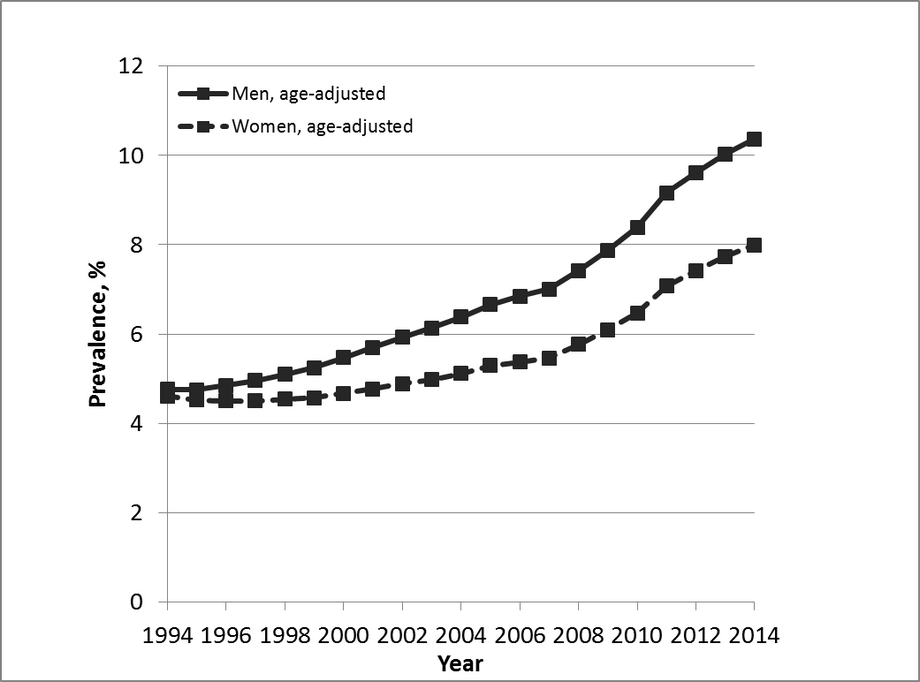Diabetes
Diabetes occurs as a consequence of the human body being unable to produce sufficient amounts of the hormone insulin, which regulates blood glucose, or to use insulin effectively.
As a result blood glucose levels remain above normal threshold levels and over time cause blood vessel damage.
This can lead to long-term damage and disabling and potentially fatal health complications, such as cardiovascular disease, blindness, kidney failure and lower-limb amputation.
The most common form of diabetes is type 2, which typically occurs in adults, although it is increasingly seen in younger people. Type 1 diabetes typically (but not always) manifests in children or young people and always requires treatment with insulin. The third main type of diabetes is gestational diabetes, which occurs because the action of insulin is impaired during pregnancy. Gestational diabetes is becoming increasingly common against rising levels of overweight and obesity as key risk factors.
The prevalence as well as actual number of people with type 2 diabetes has been increasing in Finland during the past decades, in parallel with an increase in overweight and obesity. Besides obesity, population ageing is one of the main drivers of increasing number of diabetic patients.
Diabetes is a common disease
Based on drug reimbursement register, there were altogether 286136 people with prescription for diabetes drugs (all diabetes types combined). In addition, there are people whose diabetes is treated with lifestyle only, and people who have diabetes but do not know about it. It has been estimated that altogether half a million people have diabetes in Finland. The rate is comparable to other countries in Europe.

In the FinDM project, a database compiling diabetes-related information from several national registers has been constructed. The database comprises all persons with diabetes in Finland with diagnosis between 1964 and 2017. Using this database, the FinDM project will explore the incidence, prevalence, and related complications and comorbidities as well as care and cost of care of diabetes in Finland.
More information on the methods used to construct the database can be found in the publication: Arffman M, Ilanne-Parikka P, Keskimäki I, Kurkela O, Lindström J, Sund R, Winell K. FinDM database on diabetes in Finland. Finnish institute for health and welfare. Discussion paper 19/2020.




